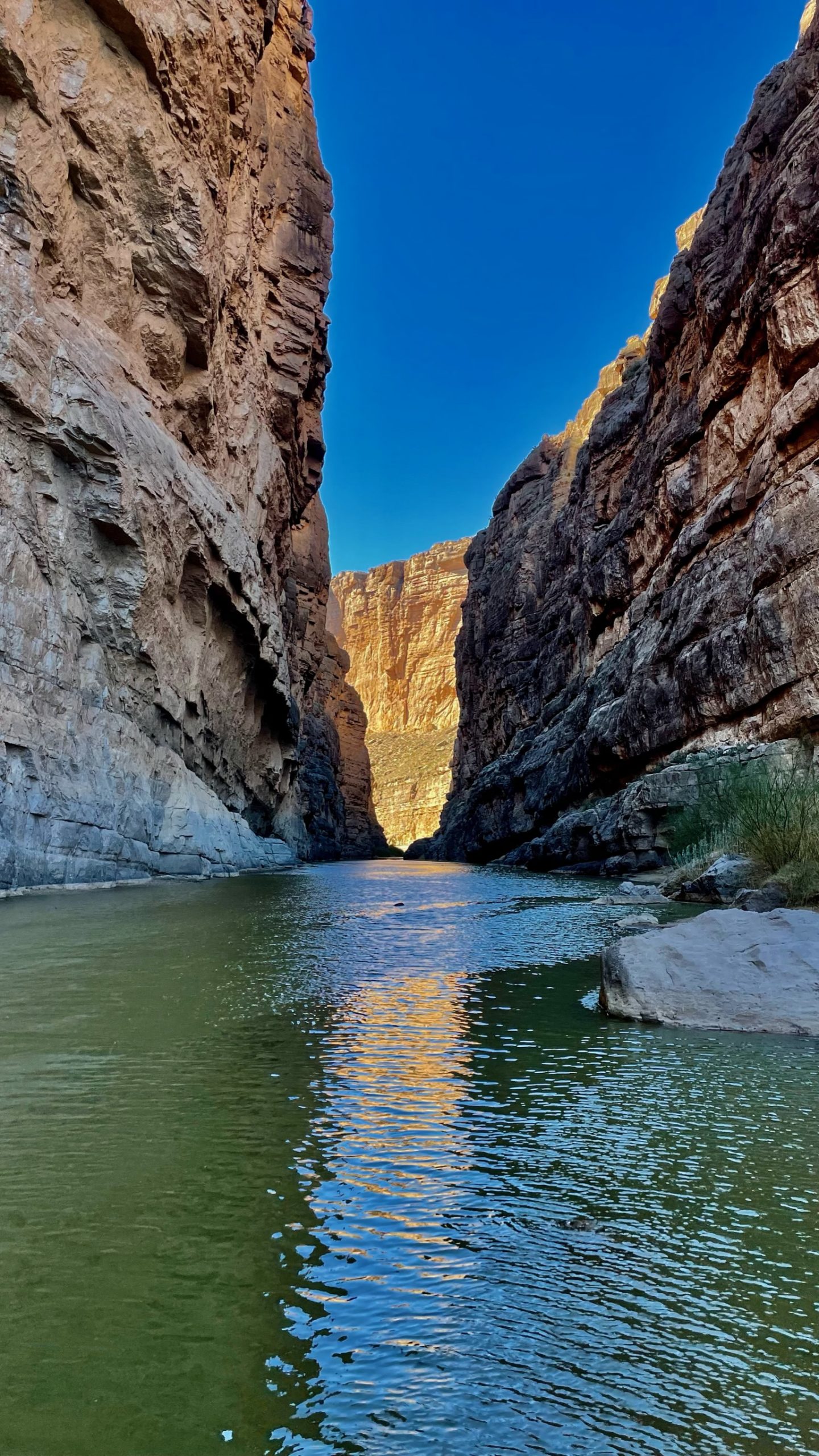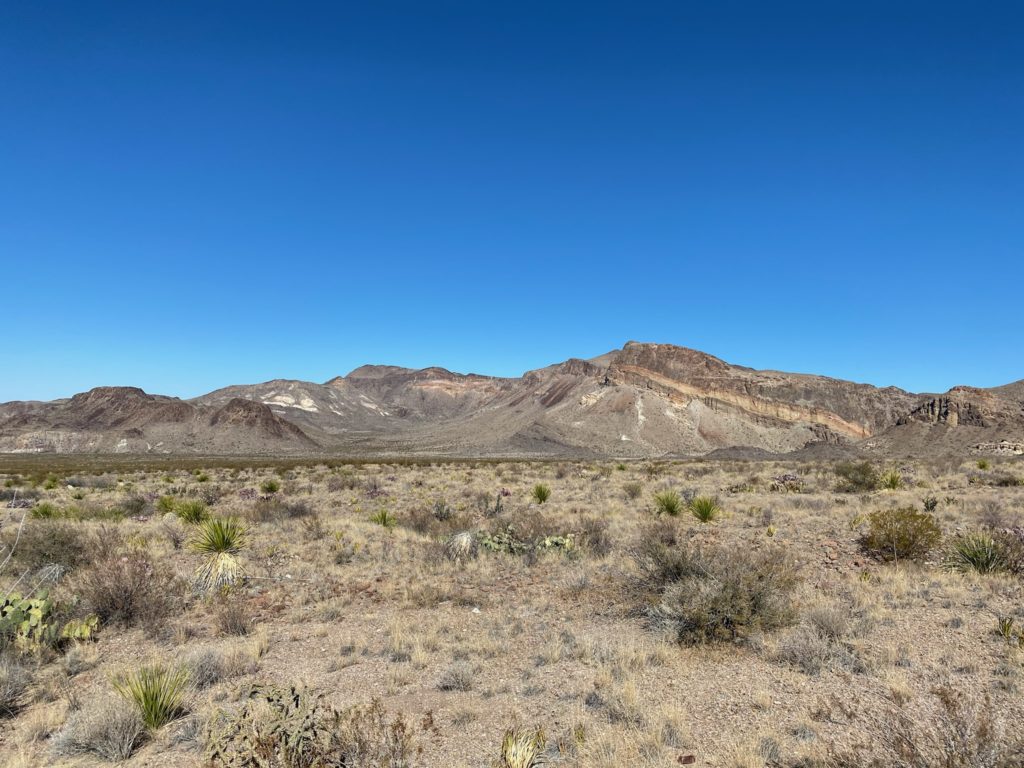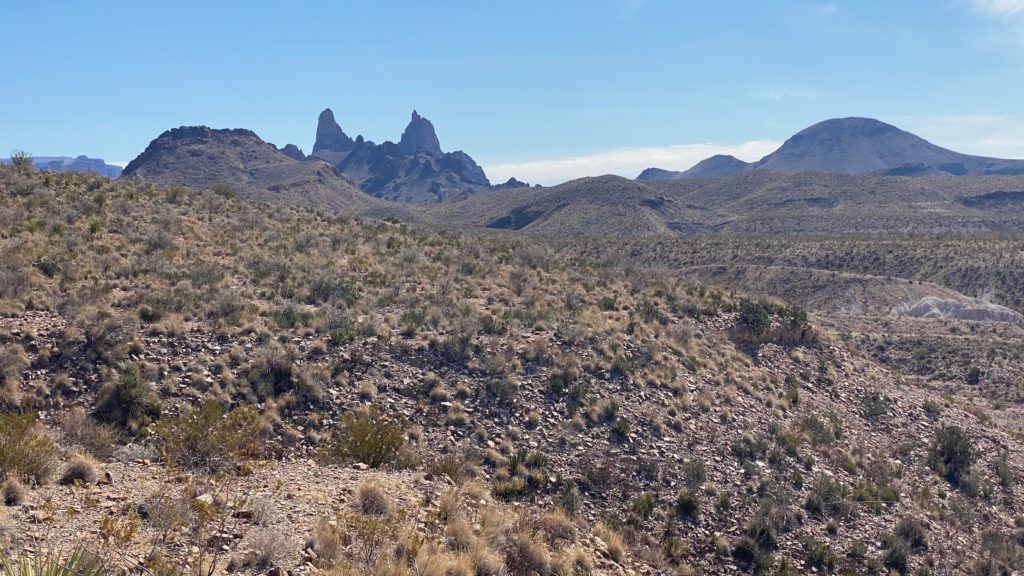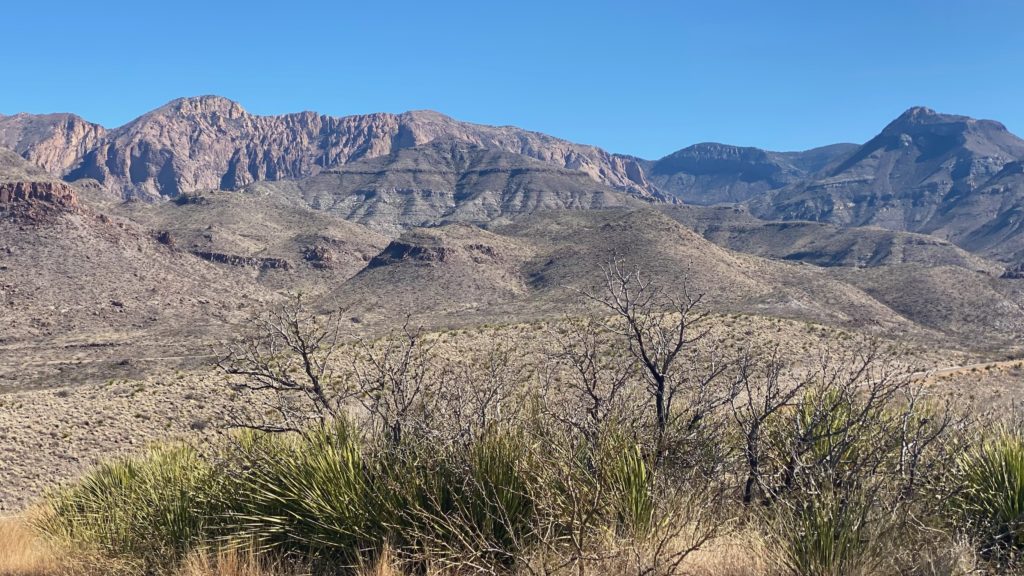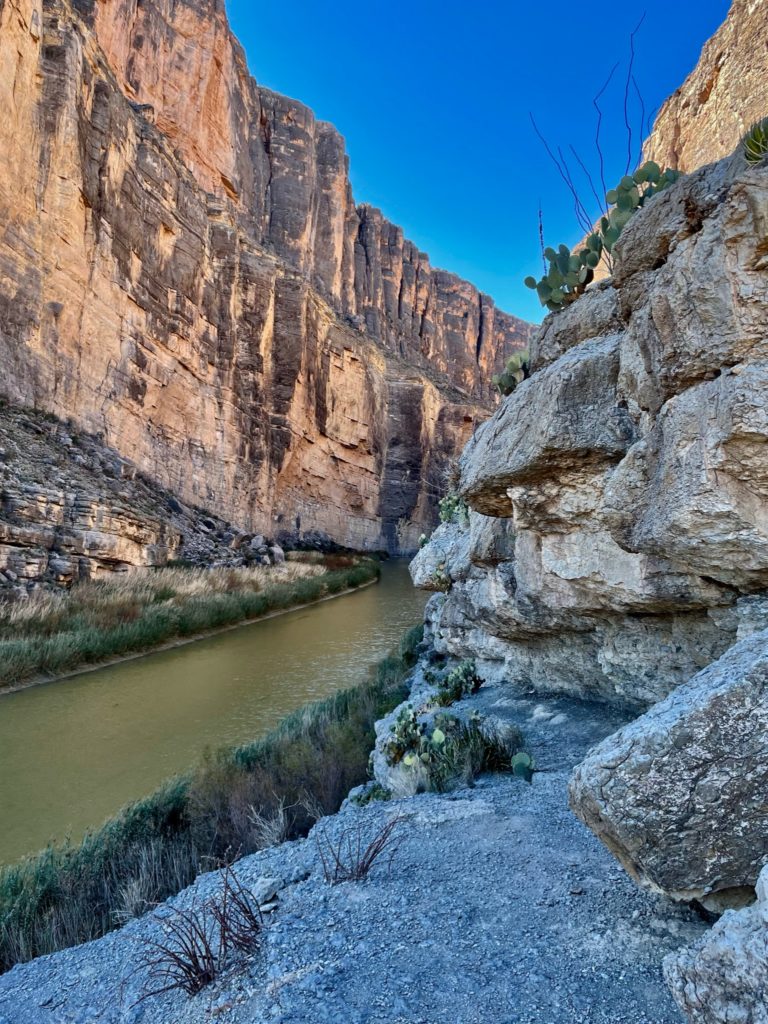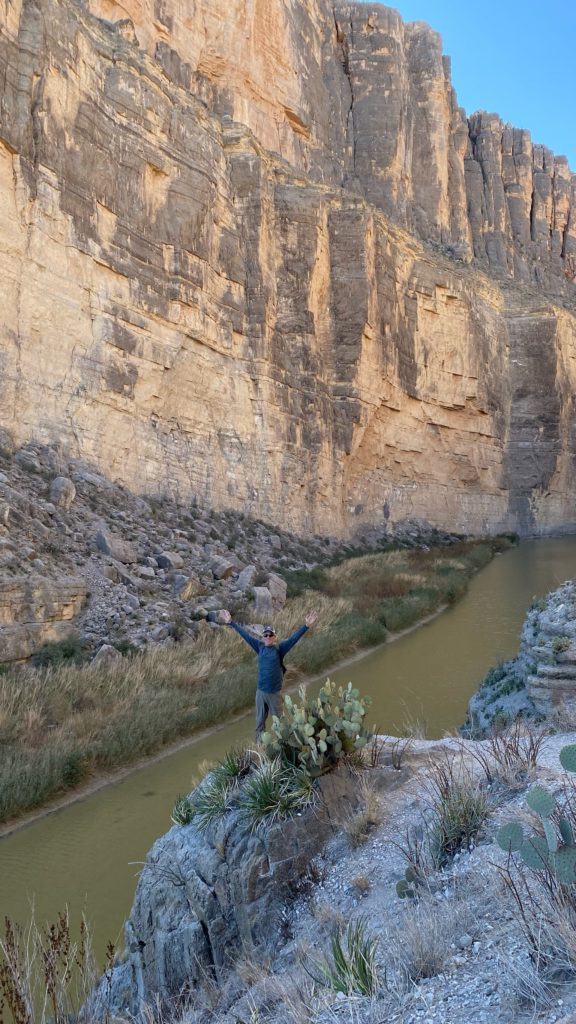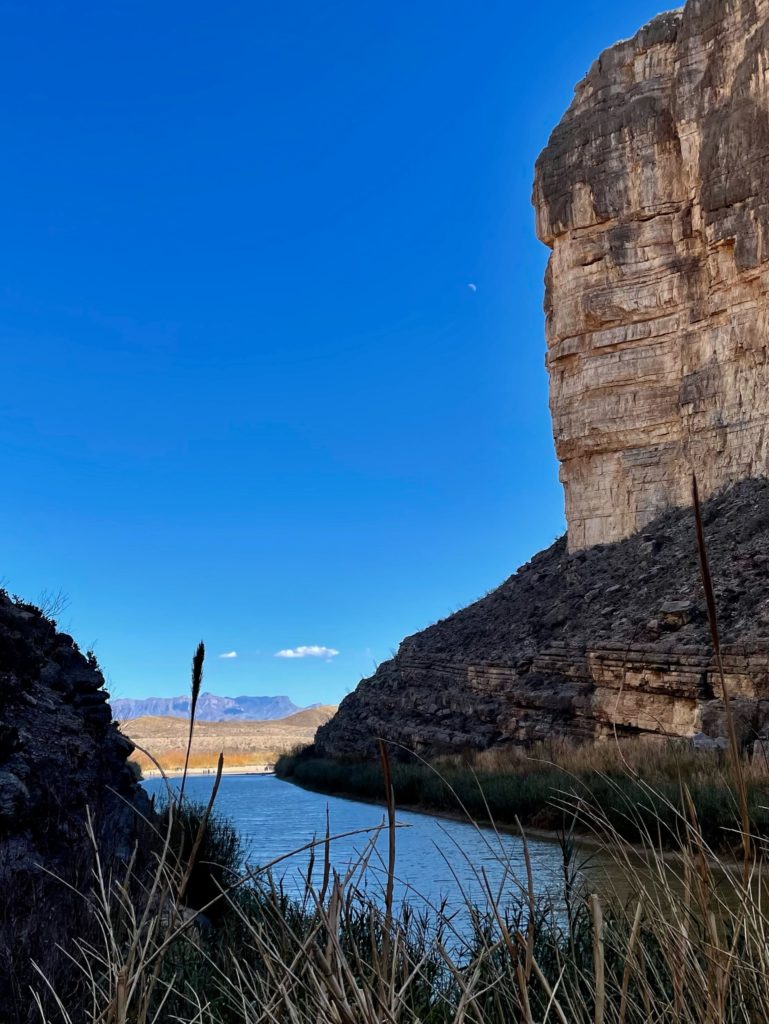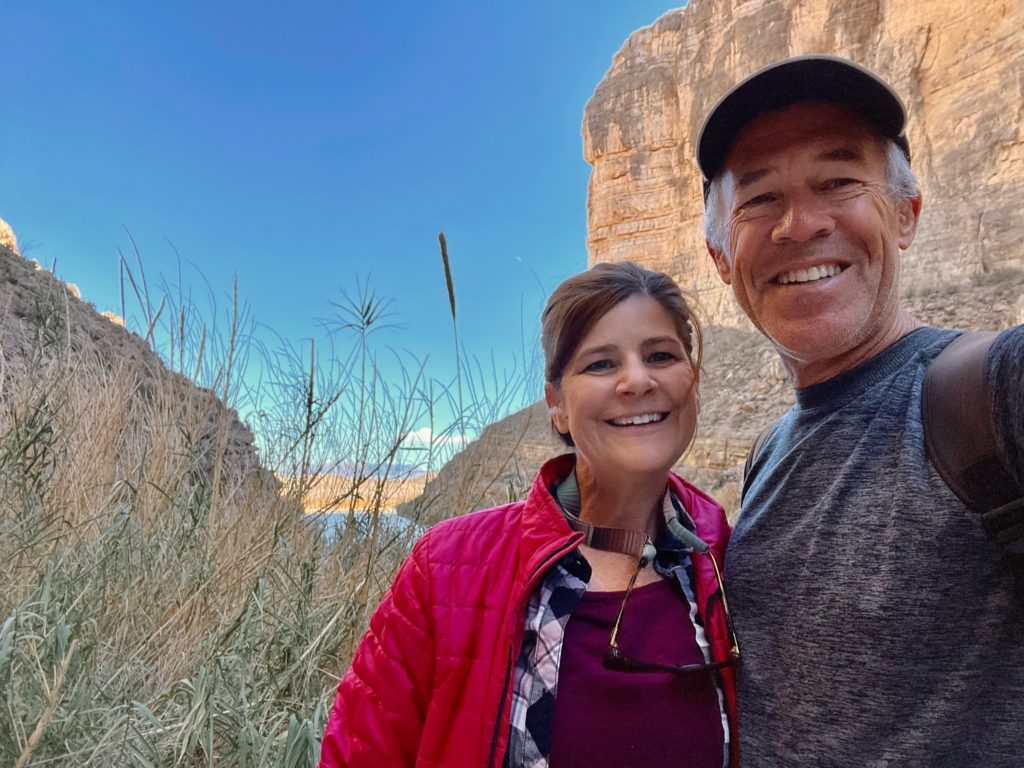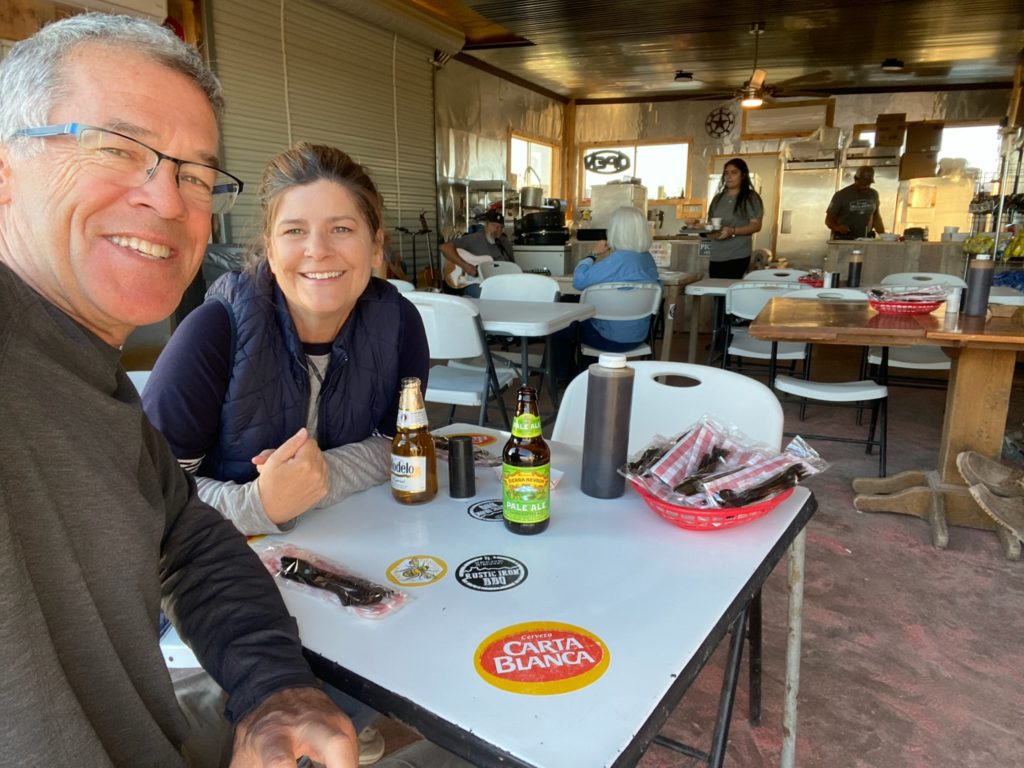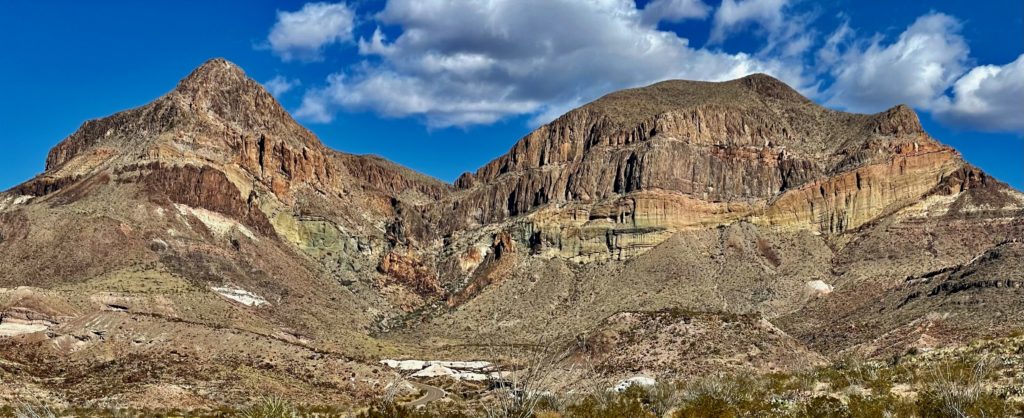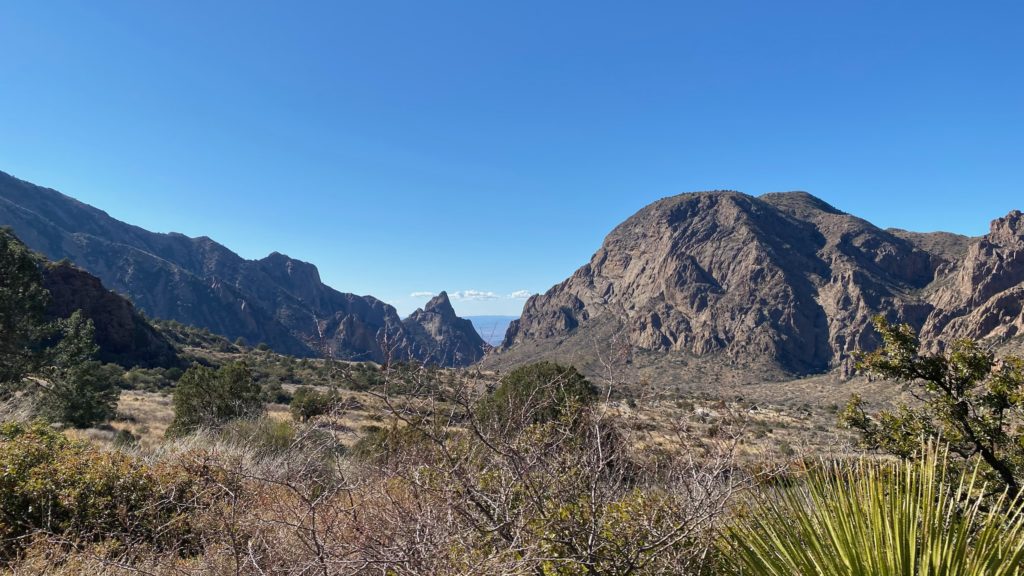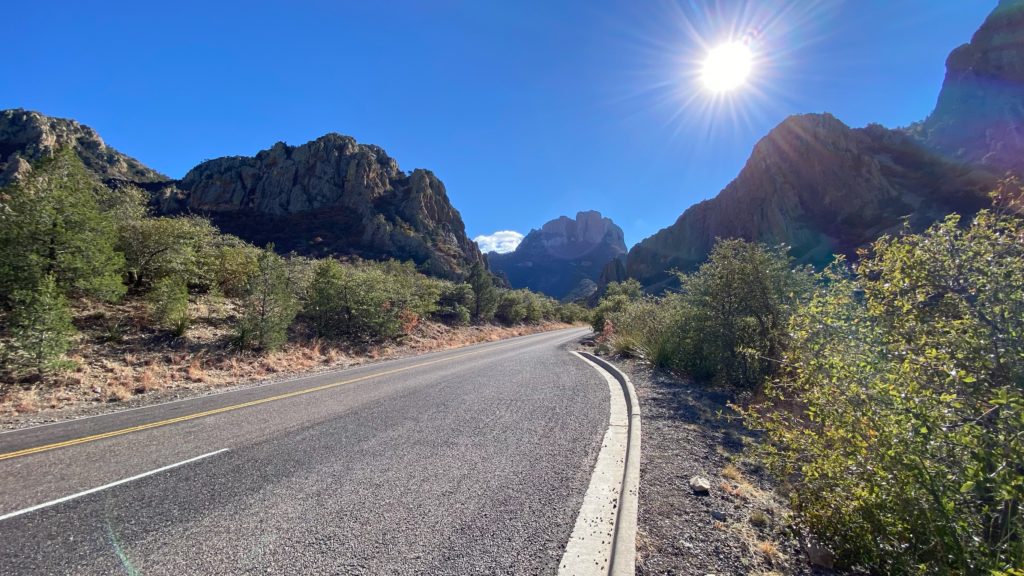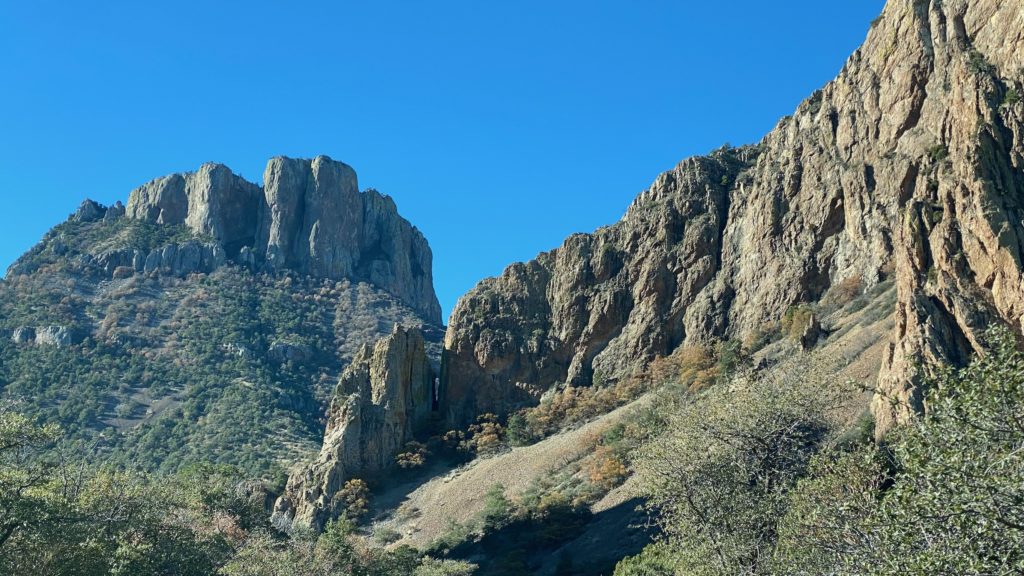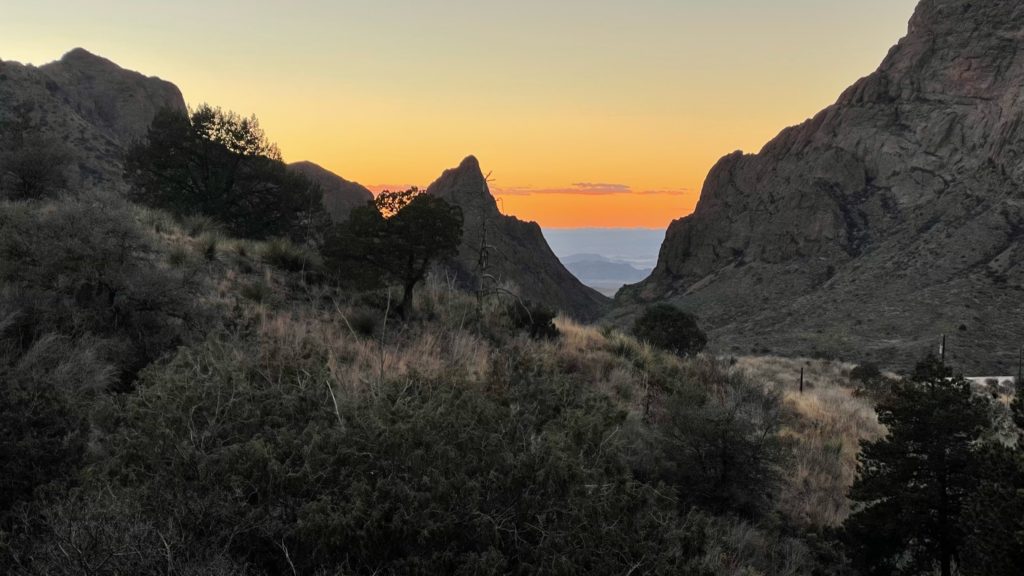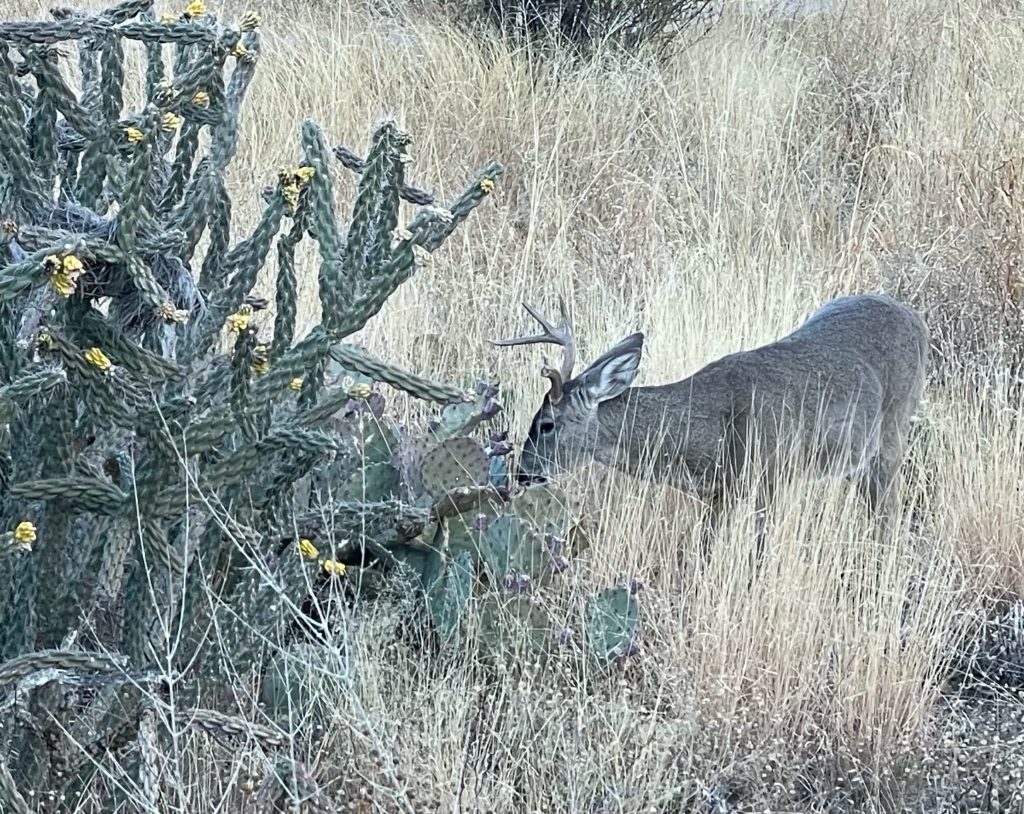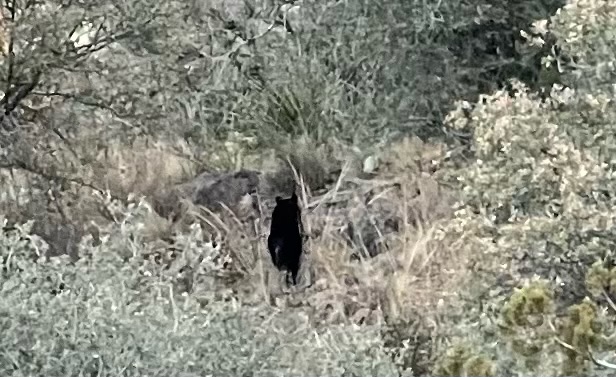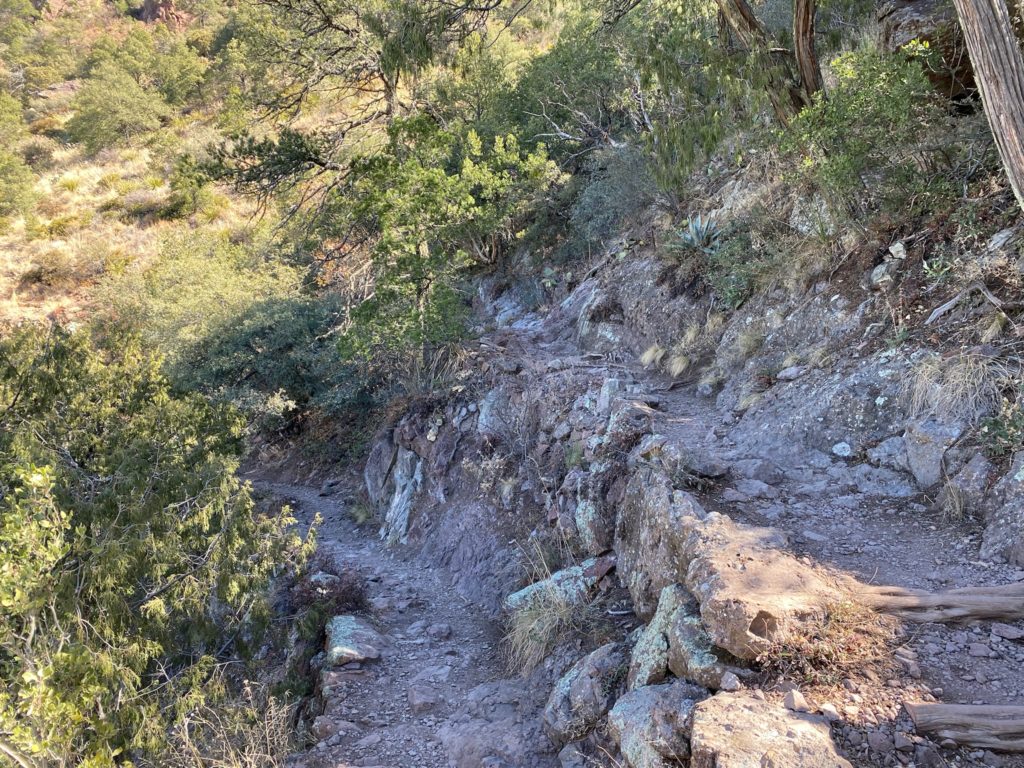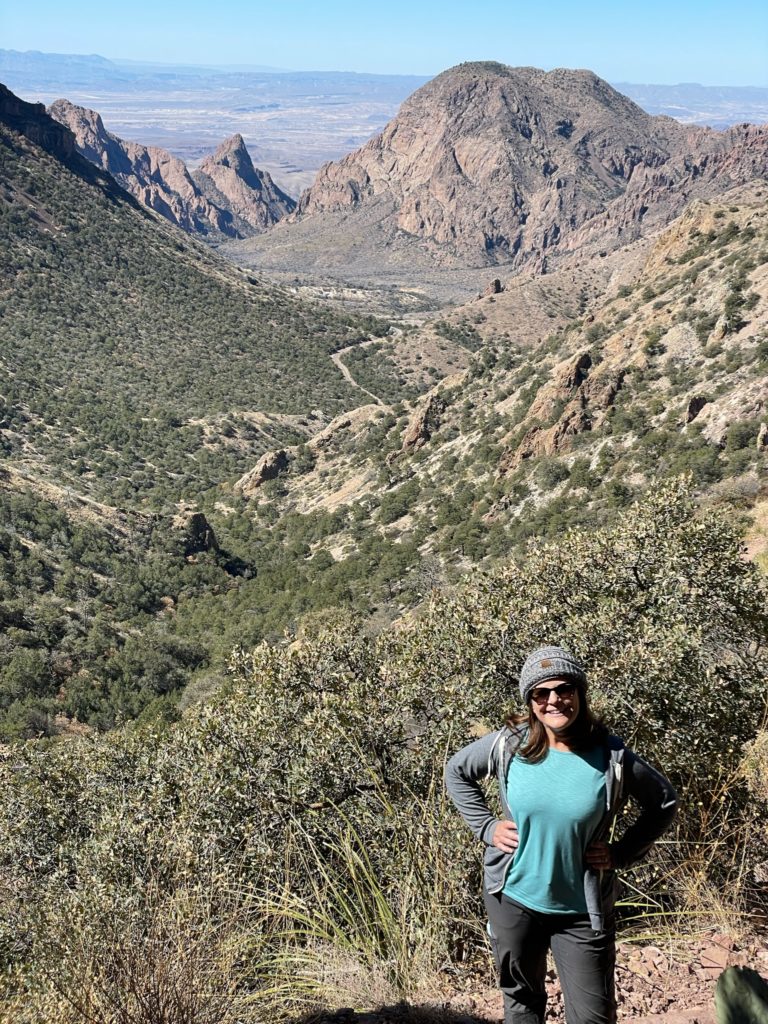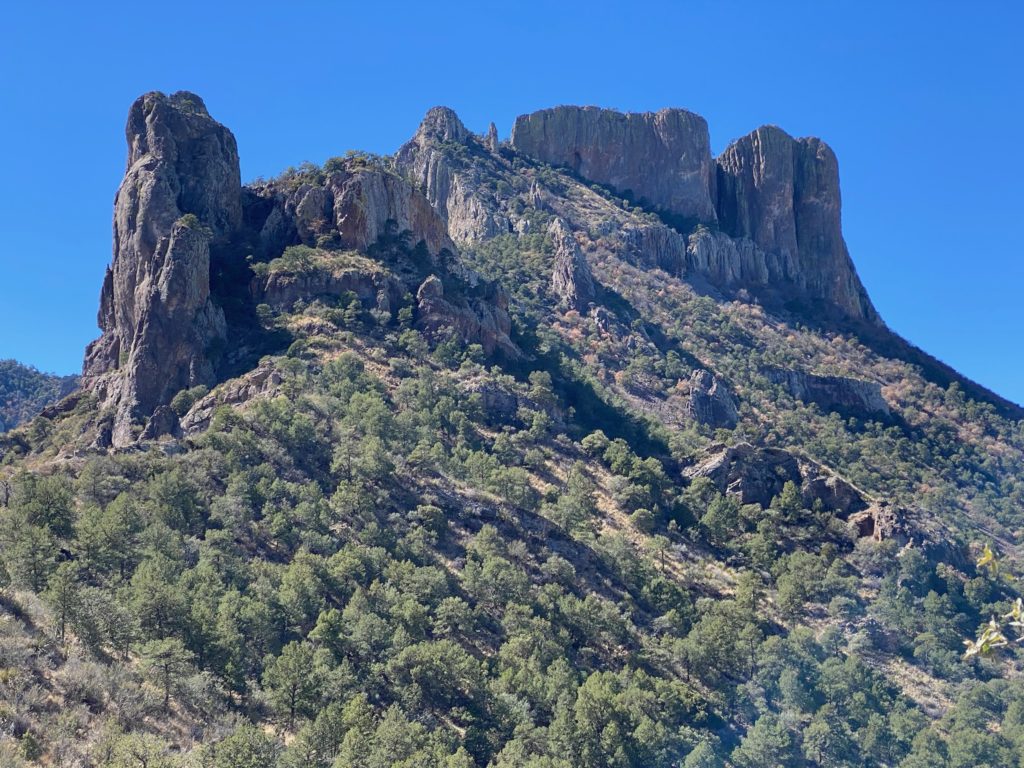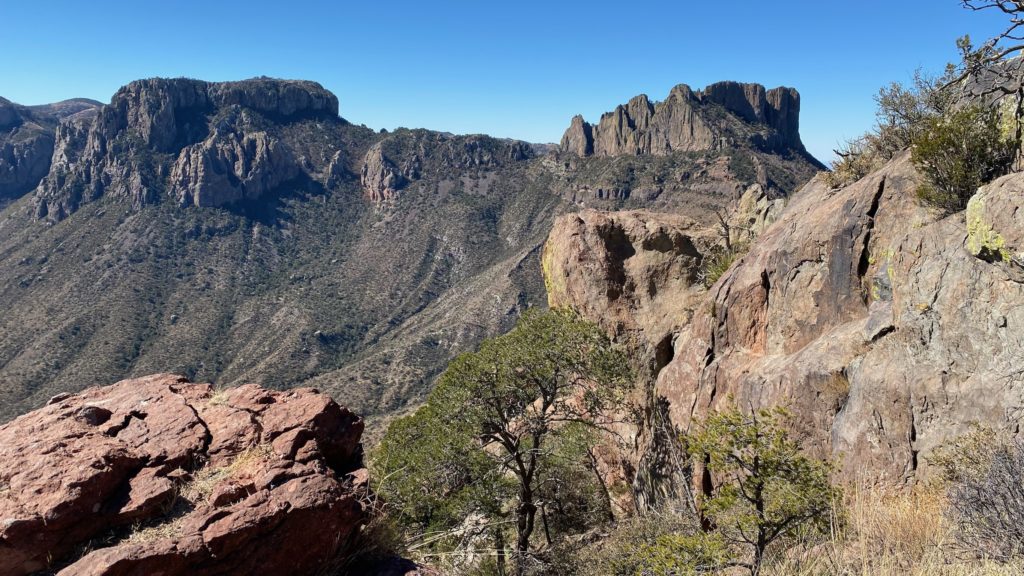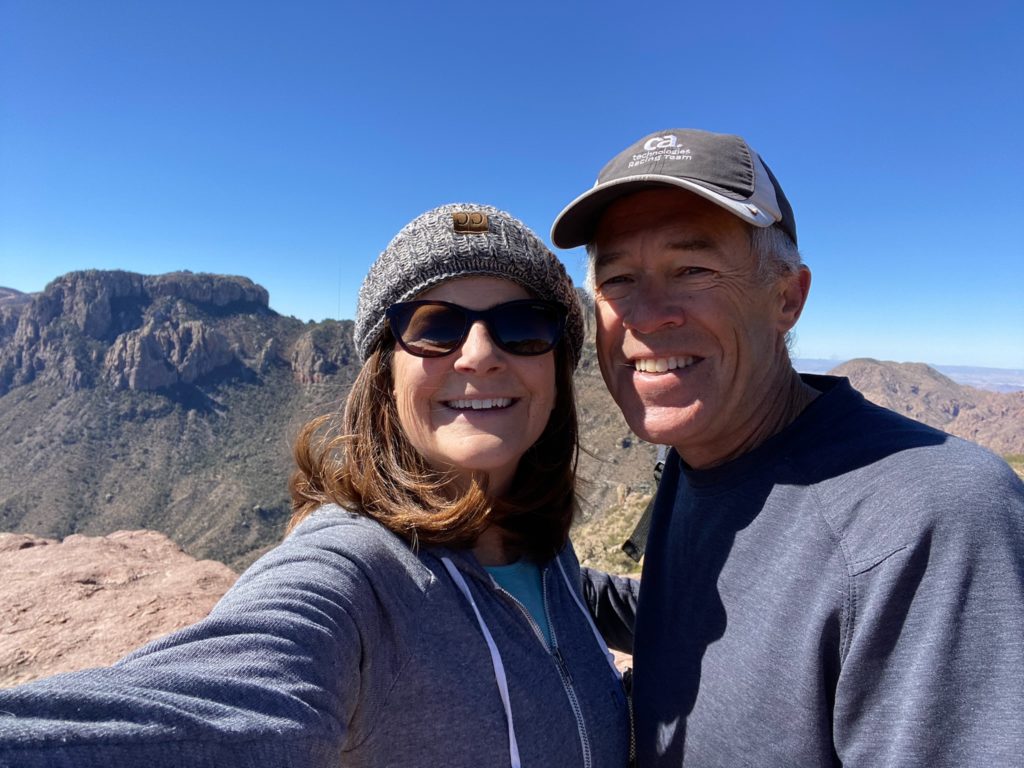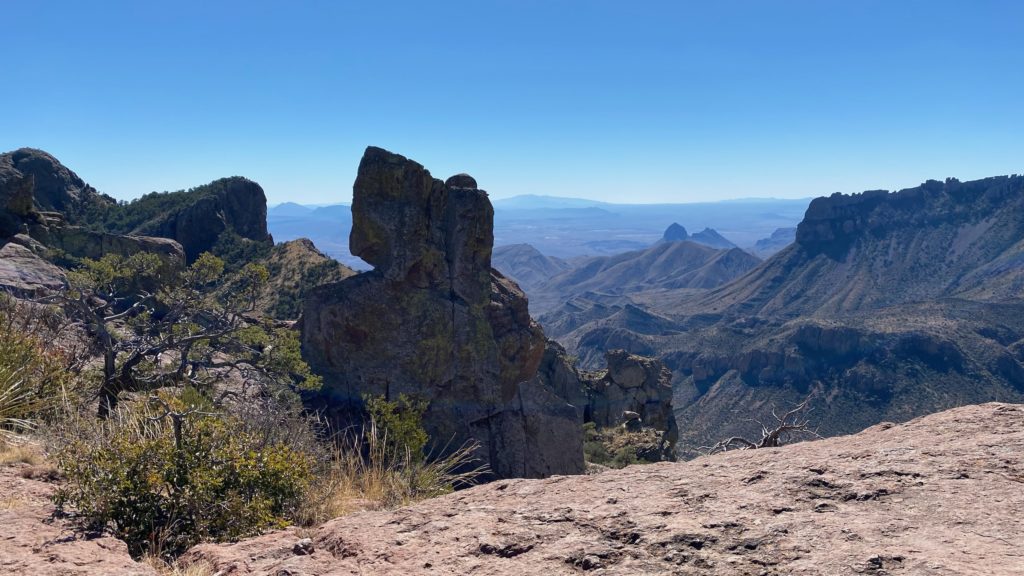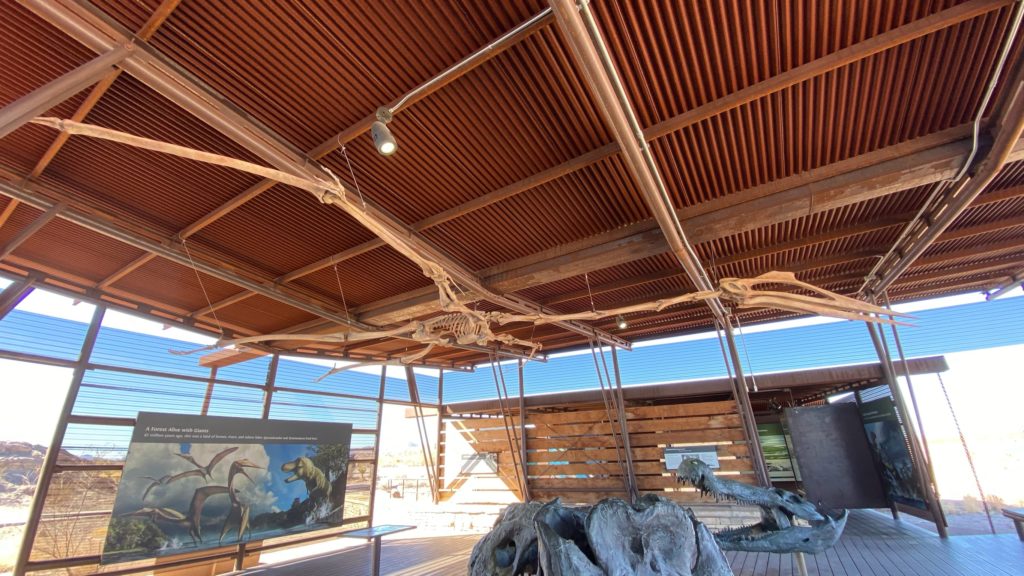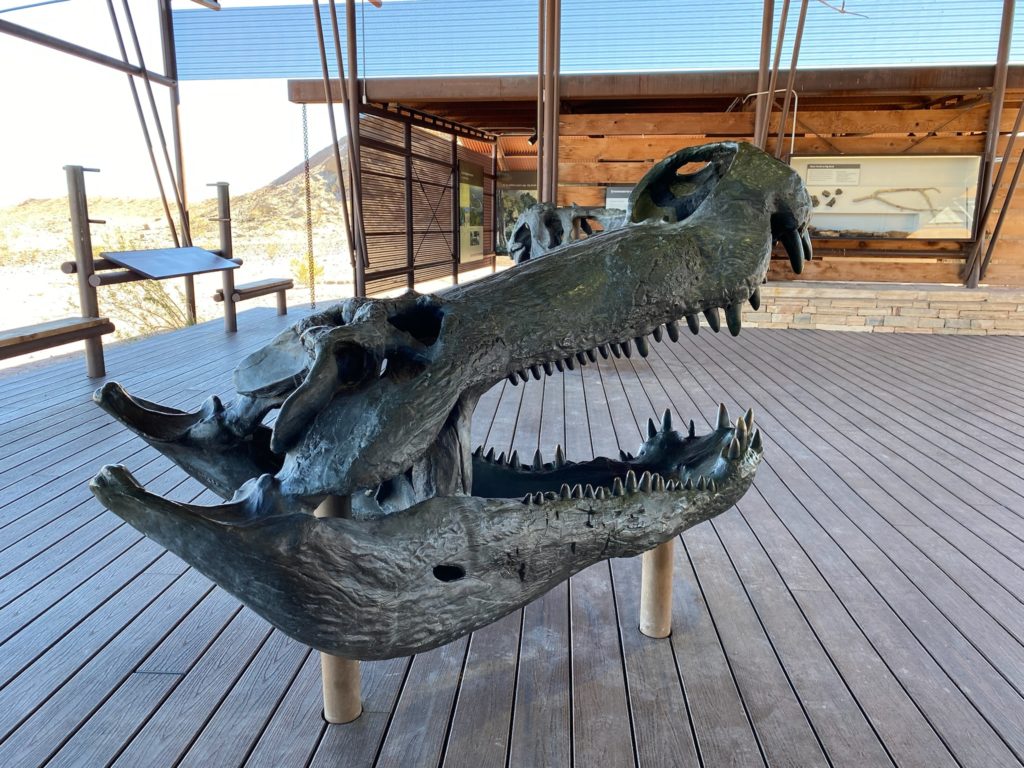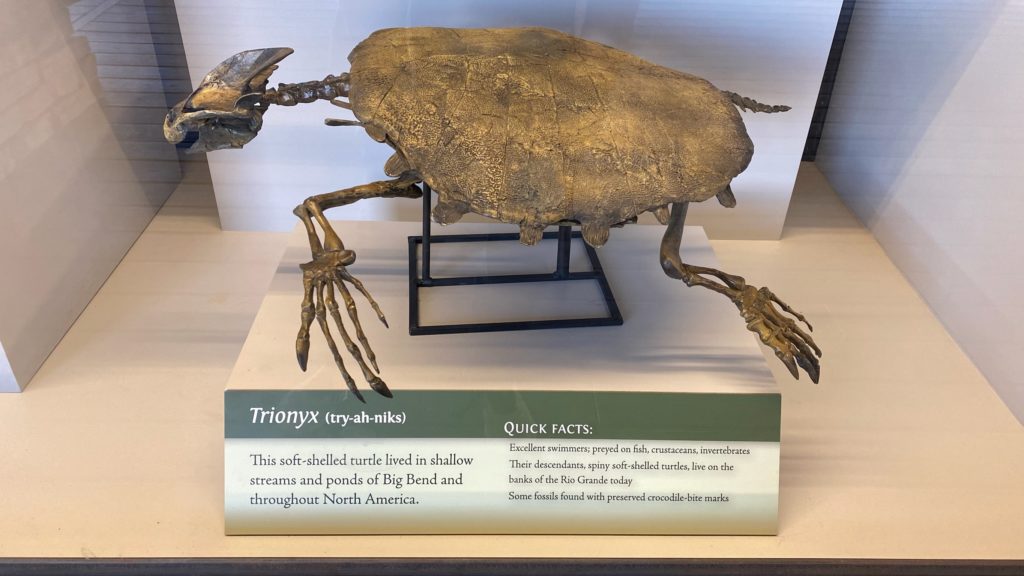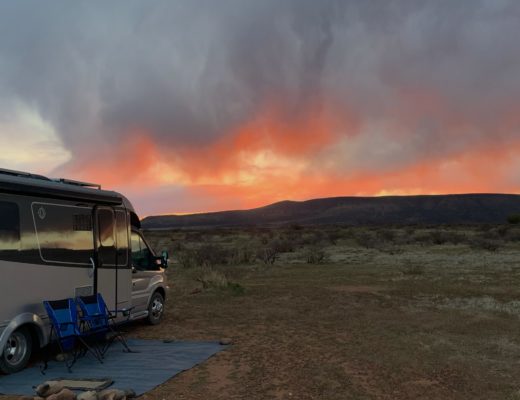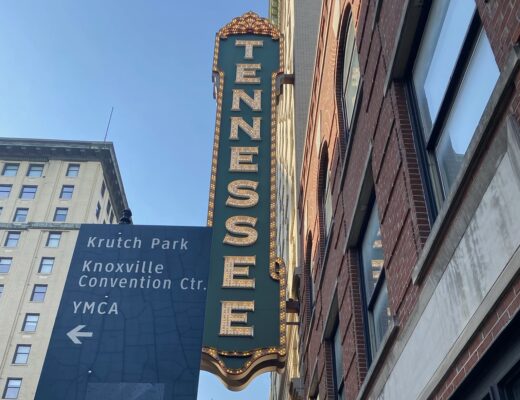With my bad attitude in check (see prior post here), I was looking forward to Big Bend National Park and it did not disappoint – scenic drives, canyon and vista hikes, pretty sunsets, a bear encounter, and some things that made my hair stand on end!
The weather in early February was sunny and between 65 and 70F, great for hiking. The first 2 nights we stayed at the Road Runner Travelers Camp RV Park just to the west of the park entrance and the third night we stayed inside the park at Chisos Basin Campground. The latter was tight pack but more scenic.
Here was our 4-day itinerary:
DAY 1 EXPLORATION – ROSS MAXWELL SCENIC DRIVE AND SANTA ELENA CANYON
We spent the first day driving south through the west portion of the park. This drive passes desert landscape with low brush, prickly pear cactus, and cream-colored stalks, but also lots of unique rock formations, jagged navy-blue mountain outlines and we had cotton-ball clouds off in the distance. Several vista views gave the sensation of floating above the earth while looking out across the land.
At the furthest point driving this direction is Santa Elena Canyon. We stopped for the short hike into the canyon. To start the hike, we waded through a little water before reaching the rock staircase that winds its way up along the ridge of the canyon overlooking the Rio Grande River. An easy and must do-hike!
We back-tracked to the RV park before driving to DB’s Rustic Iron Bar-B-Que for dinner. The food was decent, the beer was cold, and the live music was highly entertaining.
DAY 2 – CHISOS BASIN ROAD, CAMPGROUND, AND SUNSET
After driving through the Chihuahuan desert landscapes on day 1, on day 2, we headed toward the middle of the park and began climbing towards Emory Peak. The sparse landscape quickly gave way to tall green forest and rocky peaks, with Emory being the tallest in the park at 7825 ft.
The drive to the Chisos Basin Campground on a sunny day was nothing short of wonderous.
We were fortunate enough to get a spot in the campground and walked that evening toward the lodge to watch the sunset at Window View Overlook.
On our way back to the campground from the overlook, I encountered a black bear – the first and only one we’ve seen on our trip (which is shocking given how much time we’ve spent hiking around Oregon, Idaho, Montana, and Colorado!). The bear was on the switchback trail just one switchback below me so as I rounded the corner we were nearly face to face! This is when I realized that I panic in emergency situations. I literally froze. Forgot to make noise. Forgot to make myself big. Just froze. Stood there, immobile, and speechless. Doug rounded the corner a few seconds later and I managed to stutter and point to the bear which by then had b-lined it off the trail and directly down into the woods away from us.
DAY 3 EXPLORATION – LOST MINE TRAIL HIKE
The popular Lost Trail Mine hike required an early morning start (mostly to find a parking spot). The hike was a steady uphill climb (1100 feet in 2.5miles) – an outdoor buns of steel workout, but do-able! The trail is shaded by pinon pine, was well marked and had plenty of locations to step off for a moment to let others pass either up or on their way back down. About halfway through the hike, the switchbacks reveal themselves. Facing them wasn’t at the top of my list, but I could now clearly see the goal and being a bit competitive, didn’t give up at this stage. Regretted it about 3 switchbacks up, but just kept placing one foot in front of the other. When the trail finally leveled out, we were rewarded with spectacular views. Just a little further out to the highest peak provided the best view of the valley below.
The hike down was faster than a sprint to the Cold Stone Creamery – a huge disconnect with how long it took to ramble up this less than 2.5-mile trail.
DAY 4 – BIG BEND FOSSIL DISCOVERY EXHIBIT
On our last day in the park, we drove to the open-air Big Bend Fossil Discovery Exhibit at the park’s northwest side.
If nothing else, go simply to see the pterodactyl skeleton hanging from the rafters. When you’re standing underneath it, imagining it pass over head you’ll probably think twice about what life would be like today had that nine-mile-wide asteroid not slammed into earth 66 million years ago with the force equivalent to about 10 billion Hiroshima bombs.
If that doesn’t wake you up, there’s also a deinosuchus skull there that will scare the snot out of you. These giant swamp predators were essentially 26-39 feet long (think school bus length) alligators that feasted on other dinosaurs. Jinkies!
The number of fossils they’ve found in Big Bend was quite impressive and many of them like the deinosuchus or the trionyx (soft shelled turtle) were unusual so for this reason, I was glad we went.
The only area we didn’t have the time to explore was the southeastern portion of Big Bend which is known for its hot springs.
We can’t say enough good things about Big Bend National Park. It’s number 15 in terms of national park acreage and has more species of birds, bats, and cactus than any other national park, but it is surprisingly one of the least visited national parks. Over 1200 different fossil species have been found in the park and it boasts more than 150 miles of trails, the largest expanse of roadless public lands in Texas. Clearly, we were only able to sample a small part of what Big Bend has to offer, but that just gives us a reason to return.

